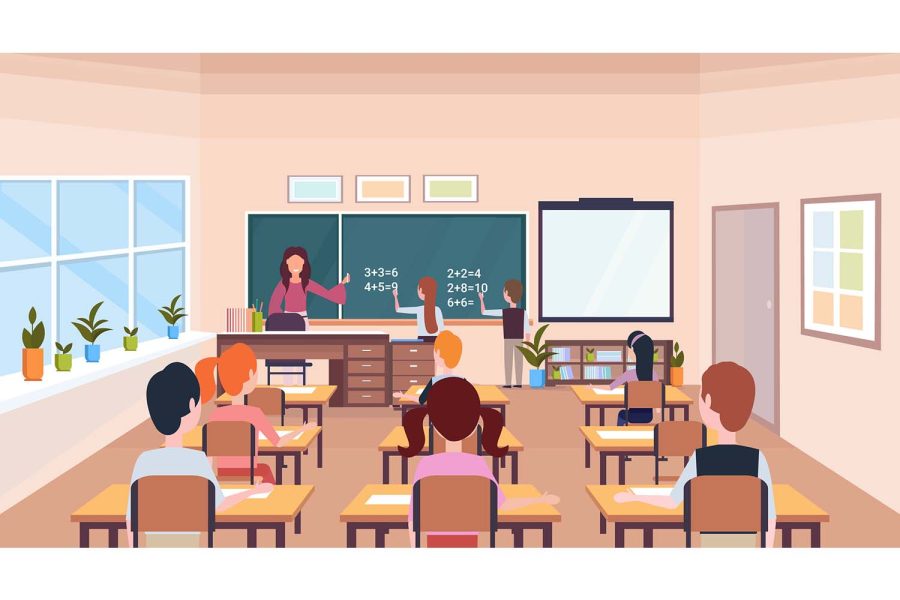1. The introduction: Inclusive education is a concept that advocates for students, irrespective of their educational history or abilities, to have equitable access to education. While it can be difficult, including students with special needs in mainstream classrooms has many advantages, including socialization, access to a broader variety of resources, and improved academic outcomes.
Students with special needs, on the other hand, may encounter several difficulties when placed in mainstream education. In this article, looks at the challenges students with special needs confront while attending mainstream educational settings and with special needs face when entering mainstream educational settings and also addresses strategies to help them thrive.

Table of Contents:
- Introduction
- Understanding Special Needs
- Challenges Faced by Students with Special Needs in Mainstream Classrooms
- Strategies to Help Students with Special Needs in Mainstream Education
- Overcoming Obstacles in Student Learning
- Supporting Mainstream Students
- Frequently Asked Questions
- Conclusion
2. Recognizing Special Needs:
Any educational instruction, their development or behavioural variables. a disorder that impairs an individual’s capacity to learn while participating in the classroom is referred to as special needs.
Students with special needs may have autism, dyslexia, ADHD, or other cognitive impairments. These impairments can have an impact on a student’s cognitive, social, emotional, and behavioural skills.
3. Difficulties Faced by Students with Special Needs in Regular Classrooms:
When students with special needs are placed in regular classrooms, they may encounter a variety of challenges.
These difficulties may include:
Customised guidance is difficult to access due to commoners can be crowded, and instructors may not have enough time to provide individualised attention to students with special needs.Difficulty keeping up with the pace of learning – a few pupils with special needs might struggle to keep up with the pace of instruction.

The challenges that arise can involve the following:
1. Individualised instruction is limited- because mainstream classes can be crowded, and instructors may not have enough time to provide individualised attention to students with special needs.
2. Difficulty keeping up with the velocity of instruction- Some students with special needs may struggle to keep up with the pace of instruction in mainstream classrooms, leading to disengagement and poor academic results.
3. Difficulties with socialisation- Students with special needs may find it difficult to socialise with their classmates, leading to isolation and low self-esteem.
4. Problems via actions- Many learners with special needs may show troublesome behaviours in the classroom, which can disrupt the learning environment.
4. Strategies for Assisting Students with Special Needs in Regular Education
Teachers can use a variety of choices to assist students with special needs to succeed in traditional schooling, including:

1. Establishing a Positive Learning Environment
Creating a supportive learning atmosphere is critical for students with special needs to succeed. This entails ensuring that the classroom is structured and organised in a way that fosters learning and positive behaviour.
Among the methods for fostering a positive learning environment are:
Establishing clear expectations and routines – Teachers can help students with special needs feel more at ease and grasp what is anticipated of their behaviour by designing clear standards along with routines for the classroom.
Creating a safe and inclusive classroom –Teachers can establish a safe and inclusive setting for learning.
Establishing a Positive Learning Environment – Creating a supportive learning atmosphere is critical for students with special needs to succeed. This entails ensuring that the classroom is structured and organised in a way that fosters learning and positive behaviour.
Among the methods for fostering a positive learning environment are:
Setting clear expectations and routines – Teachers can set clear expectations and routines for the classroom to help students with special needs feel more at ease and grasp what is expected of them.
Creating a safe and inclusive classroom – Teachers can create a comfortable and fair school atmosphere for every pupil, whatever their abilities.
Modification of Instructional Strategies:
Changing instructional strategies can help students with special needs comprehend and engage with the curriculum more effectively. Among the methods for adapting teaching methods are:
- Using visual aids – Visual aids such as charts, diagrams, and pictures can help students with special needs be able to comprehend deeper ideas.
- Providing chances for hands-on learning – Hands-on learning can help students with special needs engage with the content and apply it to real-world situations.
- Using visual aids – Visual aids such as charts, diagrams, and pictures can help students with special needs understand and retain intricate ideas.
- Providing chances for hands-on learning – Hands-on learning can help students with special needs engage with the content and apply it to real-world situations.
- Breaking down tasks – Teachers can break down tasks into smaller, more manageable steps to make them more available to students with special needs.
3. Making Assistive Technology Available
For students with special needs, assistive technology can be a useful resource. Assistive technology instances include: Text-to-speech software can assist students with reading problems by converting written text into spoken words.
4. Promote Peer Support and Collaboration
Peer support and collaboration can be advantageous for pupils with special needs. Teachers can promote peer help and collaboration by doing the following:
- Pairing students with special needs with peer mentors- Pairing a student with special needs with a peer mentor can help them develop social relationships and feel more included in the classroom.
- Encourage group activities- Group activities can help students with special needs develop social skills and learn from their classmates.
5. Overcoming Barriers to Student Learning
In addition to the tactics mentioned above, teachers can employ specific techniques to address behavioural issues, provide differentiated learning opportunities, and foster communication skills.
- Handling Behavioral Issues: Behavioural issues can disrupt the learning environment and affect the academic outcomes of students with special needs. Among the methods for dealing with behavioural issues are:
- Positive reinforcement – Praise and positive feedback for good behaviour can motivate students to continue behaving well.
- Developing a behaviour plan – A behaviour plan can assist teachers in addressing specific behavioural issues by outlining specific tactics for dealing with those issues.
2. Offering Individualized Learning Opportunities
Individualized learning opportunities can assist students with special needs to acquire information at their unique speed and in the most appropriate manner. Positive reinforcement entails rewarding exemplary behaviour with praise and positive comments.
- Individualized lesson plans – Teachers can design lesson plans that are tailored to the specific requirements of students with special needs.
- 3. Improving Communication Capabilities
Students with special needs may struggle to communicate successfully with their peers and teachers, so communication skills are critical. Among the strategies for improving communication abilities are: - Using visual aids – Visual aids can assist students with disabilities in understanding and communicating complex ideas.
6. Supporting Mainstream Students
Inclusive education is not just about supporting students with special needs; it is also about creating a classroom environment that is supportive and inclusive for all students. Some strategies for supporting mainstream students include:
- Encouraging diversity and inclusivity – Teachers can encourage diversity and inclusivity by promoting cultural awareness and creating a classroom environment that is welcoming to all students.

7. Frequently Asked Questions
Q1. What is inclusive education?
A. Inclusive education is a philosophy that advocates for equal access to education for all students, regardless of their background or abilities.
Q2. What are special needs?
A. Special needs refer to any learning, developmental or behavioural disorder that affects a student’s ability to learn and participate in the classroom.
Q3. What are some strategies for helping students with special needs in mainstream classrooms?
A. Some strategies for helping students with special needs in mainstream classrooms include creating a supportive learning environment, adapting instructional strategies, providing assistive technology and encouraging peer support and collaboration.
Q4. What are some common challenges faced by students with special needs in mainstream classrooms?
A. Common challenges faced by students with special needs in mainstream classrooms include limited access to individualised instruction, difficulty with socialisation and communication, and behavioural issues.
Q5. How can teachers address behavioural issues in the classroom?
A. Teachers can address behavioural issues in the classroom by using positive reinforcement, creating a behaviour plan, and working with parents and school administrators to address specific behavioural issues.
Q6. How can teachers support mainstream students in an inclusive classroom?
A. Teachers can support mainstream students in an inclusive classroom by encouraging diversity and inclusivity, providing opportunities for student leadership, and creating a classroom environment that is welcoming to all students.
8. Conclusion
In conclusion, inclusive education is a philosophy that advocates for equal access to education for all students, regardless of their background or abilities. By creating a supportive learning environment,
adapting instructional strategies, providing assistive technology, and encouraging peer support and collaboration, teachers can help students with special needs succeed in mainstream classrooms.
Additionally, by addressing behavioural issues, providing individualised learning opportunities, and developing communication skills, teachers can help students with special needs overcome obstacles in their learning.
Finally, by supporting mainstream students and creating a classroom environment that is welcoming to all students, teachers can create an inclusive classroom that benefits all students.
Inclusive education is a complex and challenging task, but it is essential for ensuring that all students have access to quality education. By adopting the strategies and techniques outlined in this article, teachers can create a classroom environment that is supportive, inclusive and effective for all students.
It is important to remember that each student is unique, and teachers must be flexible and creative in their approach to supporting students with special needs.









